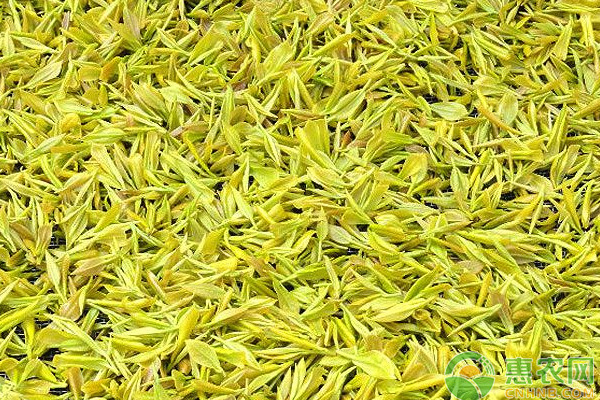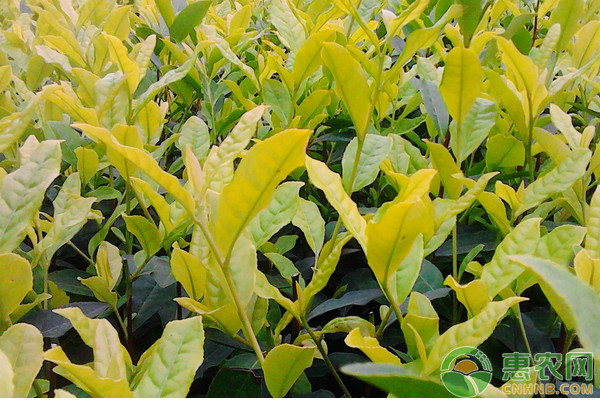How to cultivate and grow golden bud tea? The amino acid content of Golden Bud Tea is relatively high, and there is “Sanhuang†special. In June 2014, Liuhe Township of Liuzhi District introduced 165,000 gold bud teas from Shangyu County, Zhejiang Province, planting 3.33hm2, and introducing white tea to plant 50hm2. 2016 Golden Bud Tea Starting to pick, the growth is not inferior to the original place of origin, with obvious economic benefits. 1 Basic situation of introduction 1.1 Geographical location and climatic conditions Liuzhi Special Zone is located in the western part of Guizhou Province, east of Liupanshui City, 172 km away from the provincial capital Guiyang, 98 km away from the downtown area of ​​Liupanshui, 105°08′~105°23′ east longitude and 25°29′~26°33′ north latitude. The introduction of the land of Yuehe Village is located in the southwest of Liuzhi Special Zone, 37 km away from the urban area, with a forest coverage rate of 63%. Most of the altitudes are between 1 200 and 1 300 m, with a maximum altitude of 1 359 m and a minimum altitude of 1 130 m. The landform is dominated by Zhongshan, low mountains and hills. The climate of introduction is mild, subtropical humid climate, no cold in winter, no heat in summer, suitable climate, frost-free period 320 d, altitude 1 250 ~ 1 350 m, rainfall from December to March next year, foggy, foggy, annual rainfall The quantity is 1 430.6 mm, the annual average temperature is 15.6 °C, and the annual sunshine time is 1 194.4 h. The monthly distribution is shown in Table 1. The extreme maximum temperature is 31 °C and the extreme minimum temperature is -3 °C. In the first half of March, there is more cold spring time. 1.2 Soil fertility The introduced land belongs to the hilly area of ​​the valley. The native vegetation is dominated by evergreen oak forest. The remaining tree species are mostly scorpions and ferns. The native vegetation is not much. The succession of the plant community mainly includes masson pine forest and a small amount of Chinese fir forest. The mountain turned into a bush grass slope. The soil belongs to the horse blood soil in red soil, the pH value is about 5.2, it is rich in selenium, and the organic matter content is high. The soil fertility index reaches level III, see Table 2, and the heavy metal cadmium, arsenic and lead are lower, all of which reach production. Green food requirements. 1.3 Cultivation techniques 1.3.1 Ladder cultivation From October to December 2013, the excavator was used to open the slope, and the slope was arranged along the contour line into a 3-8 m wide ladder, and the topsoil and weed trees were buried below 50 cm below the soil. Table 1 Statistical data of meteorological data of Moon River Township, Liuzhi District, 2016 Table 2 Soil pH value and large amount of element detection table (in 2017) Table 3 Phenological period of gold shoots Note: Spring 2017 is coming later, about 20 days later than the average year. Table 4 Comparison of growth potential of golden bud tea and white tea in spring and summer (2017) 1.3.2 Cultivation management Planted in January 2014, using 1 m equidistant mechanical ditch, applying 1 500 kg of organic fertilizer per 667 m2, plant spacing 20 cm, seedlings per plant, planting 3,350 plants per 667 m2, pruning tea seedlings during transplanting Up to 25 cm, no pruning will be carried out in the year after transplanting and before the summer of the second year. In the second year, the organic fertilizer will be applied once a day, 250 kg per 667 m2, and the next year will start pruning in the second year. The third year will start the tea processing, combined with the pruning of organic fertilizer in May and November, each 667 m2. For 250 kg and 400 kg. 2 introduction performance 2.1 phenological period Through three years of observation, the golden bud tea began to germinate in six branches in early March, and a large amount of germination occurred in mid-March. The germination time was not obvious in summer, and the germination amount was small. The germination time of autumn buds was concentrated in mid-August. Flowering began in early September, and mid-10th was the flowering period. The flowers were pure white and had a clear fragrance. The fruit ripening period was mid-November in the next year. Gold bud tea has strong resistance to low temperature and cold spring at 2~4 °C in early spring, and the damage degree is much lighter than that of Fuding white tea cultivated locally. 2.2 Growth potential According to a sample survey of gold buds in spring and summer in July 2017, the growth potential of gold bud tea shoots is stronger than that of white tea introduced in the same period. The number of buds per 1 m2 is 197, and that of white tea is 112. The growth of white tea in summer and autumn Slightly stronger, see Table 4. The golden bud tea has many branches, dense branches, less white tea branches, small branching angle, and sparse plants. The field height is 57.75 cm, the diameter of the near ground is 2.03 cm, and the plant height of the white tea is 60.3 cm. The diameter of the near ground is 1.87 cm. The coverage of golden bud tea is larger than that of white tea, and the economic output of biological production is larger than that of white tea. 2.3 pests and weeds and prevention methods According to the field investigation, the golden bud tea pests and diseases are tea green leaf mites, black thorn powder mites, tea mites, tea thorn moths, and the serious damage of tea green leaf mites, only a small amount of anthrax occurs. The main method is to prevent and kill pests by using color plates. The weeding in tea gardens is combined with manual weeding and mechanical assisted weeding. 2.4 Tea production The tea garden 5% tea buds reach the fresh leaf standard for the mining period, and the picking should be arranged in time. Golden bud tea is an albino variegated tea, which has become a treasure in tea because of its high amino acid content and high content. It has the value of drinking and ornamental value, in order to maximize the retention of tea amino acids and other contents in tea. The material is not destroyed or transformed, and the nutritional value and ornamental value of the tea are maximized. The production process adopts the needle-shaped tea process in the green tea process, that is, picking, cooling, killing, regaining, slurging, drying and preserving. 3 Economic Benefit Analysis In 2016, trial production began. In 2017, dry tea was produced, producing 10 kg per 667 m2, including 1 kg (4 000 yuan/kg) of one bud and one leaf, and 3 kg (800 yuan/kg) of one bud and two leaves. ), one bud three leaf two tea 6 kg (200 yuan / kg), per 667 m2 output value of 7 600 yuan, except labor costs 400 yuan, management costs 400 yuan, organic fertilizer costs 580 yuan, processing fees, packaging fees, etc. 1 200 yuan, net profit of 5,020 yuan per 667 m2. 4 Conclusion Golden bud tea adapts to the climatic and environmental conditions of the six branches and grows well. Golden bud tea is suitable for the environment with six foggy and foggy sunshine, good growth, bright color of leaves and less pests and diseases. Six branches belong to the karst mountainous area. It is not suitable for large-scale mechanization. It can develop gold bud tea green food on a moderate scale, and it can obtain better economic benefits. Medical Equipment Disposal,Syringes Needles Sizes,Disposable Syringe,Insulin Syringe,gause roll,Cotton roll FOSHAN PHARMA CO., LTD. , https://www.full-pharma.com




